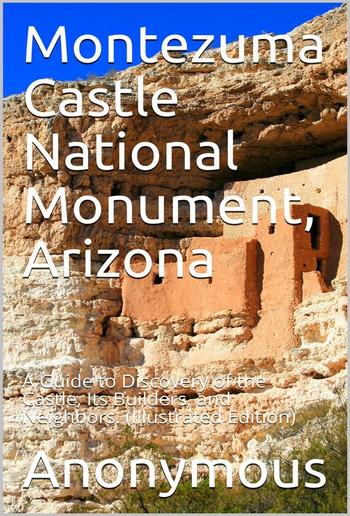
anonymous - Montezuma Castle National Monument, Arizona / A guide to discovery of the Castle, its Builders, and Neighbors.
Montezuma Castle National Monument, Arizona / A guide to discovery of the Castle, its Builders, and Neighbors.
anonymous
Description
Montezuma Castle National Monument protects a set of well-preserved dwellings located in Camp Verde, Arizona which were built and used by the Sinagua people, a pre-Columbian culture closely related to the Hohokam and other indigenous peoples of the southwestern United States, between approximately 1100 and 1425 AD. The main structure comprises five stories and about 45 to 60 rooms and was built over the course of three centuries.
Neither part of the monument's name is correct. When European-Americans first observed the ruins in the 1860s, by then long-abandoned, they named them for the famous Aztec emperor Montezuma in the mistaken belief that he had been connected to their construction (see also Montezuma mythology). Having no connections to the Aztecs, the Montezuma Castle was given that name due to the fact that the public had this image of the Aztecs creating any archaeological site. In fact, the dwelling was abandoned more than 40 years before Montezuma was born, and was not a "castle" in the traditional sense, but instead functioned more like a "prehistoric high rise apartment complex".
Several Hopi clans and Yavapai communities trace their ancestries to early immigrants from the Montezuma Castle/Beaver Creek area. Archaeological evidence proves that the Hohokam and Hakataya settled around or in the Verde Valley. Clan members periodically return to these ancestral homes for religious ceremonies.
The monument itself encloses 860 acres near the geographic center of Arizona and the intersection of the Colorado Plateau and Basin and Range physiographic provinces.
The dwellings and the surrounding area were declared a U.S. National Monument on December 8, 1906 as a result of the American Antiquities Act, signed earlier that year. It is one of the four original sites designated National Monuments by President Theodore Roosevelt. Montezuma Castle was added to the National Register of Historic Places on October 15, 1966.
It is an easy monument to visit, just a short distance off Interstate 17, at exit 289. There is a /3 mile (0.54 km) paved trail starting at the visitor center that follows the base of the cliff containing the ruins. Access to the interior of the ruins has not been allowed since 1951 due to concerns about visitor safety and damage to the dwelling. About 400,000 tourists visit the site each year. The park is open from 8am to 5pm every day of the year, except for Christmas Day.
The visitor center includes a museum about the Sinagua culture and the tools they used to build the dwellings. The museum houses many artifacts, such as stone tools, metates used for grinding corn, bone needles, and ornaments of shell and gemstone, which prove that the Sinagua were fine artisans as well as prolific traders. There is also a Park Store operated by Western National Parks Association.

